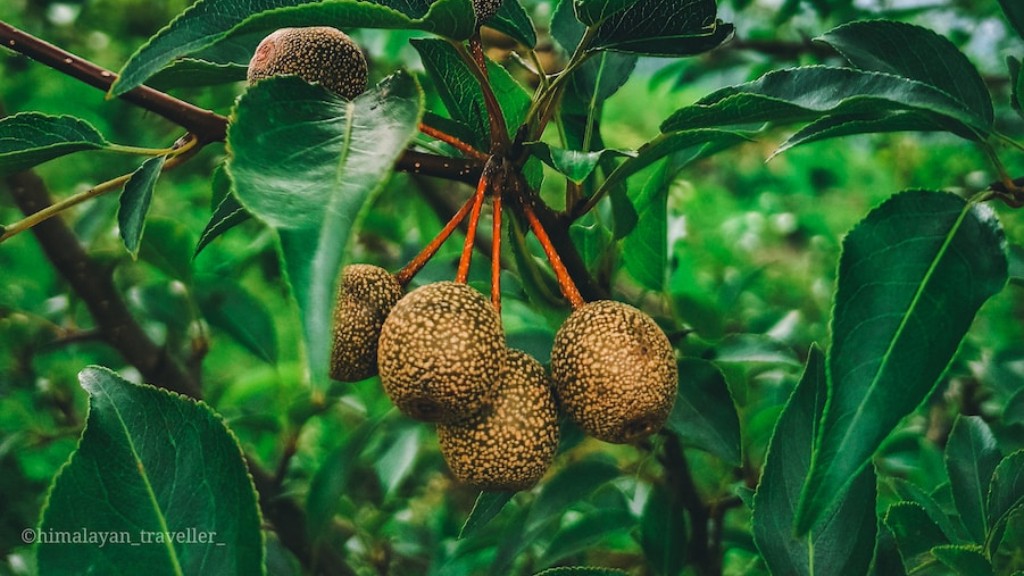How Often to Water New Lemon Tree
When planting a new lemon tree, the most important thing to consider is how often to water it. This is because watering regularly helps to keep the soil moist, boosts root growth, and encourages healthy fruit production. Overwatering can cause problems as it can lead to root rot, fungal problems, and even death of the tree. In order to keep your lemon tree happy, it is important to understand when and how often to water it.
The frequency of watering needed for a lemon tree depends on several factors, including climate, soil type, and the size of the tree. Generally, new trees should be watered two to three times a week, depending on the level of heat and humidity in the area. It is essential to check the soil for moisture before watering since lemon trees don’t like to remain in wet soil for a prolonged period of time. A simple way to check is to stick your finger in the soil; If it’s dry up to the first joint, it’s time to water.
When watering, make sure to give the tree a good soaking. To avoid overwatering, allow the area to dry out a bit between waterings. Additionally, applying mulch around the soil will help the soil retain moisture longer by blocking the evaporation of water from the surface. Mulch will also help prevent weeds from growing.
Your lemon tree also requires regular fertilisation in order to keep it healthy. The best time to fertilise is in the spring before new growth. Avoid using pesticides and chemical fertilisers as they can damage your tree. It is also important to prune your lemon tree on a regular basis to help maintain its shape and promote healthy growth. Pruning also helps to improve air circulation and control the size of the tree.
In conclusion, it is important to water your new lemon tree regularly. Make sure to check the soil for moisture before watering and give it a good soaking. Additionally, apply mulch and fertilise your lemon tree in the spring, and prune it regularly for healthy growth.
Soil Type Matters
The type of soil in which your lemon tree is planted can make a big difference in determining how much and how often to water. For instance, sandy soil drains quickly and does not hold much moisture, so lemon trees planted in these types of soils need to be watered more frequently than trees planted in other types of soil. On the other hand, loam or clay soil retains moisture better and requires less frequent watering. Make sure to pay attention to the properties of the soil in your area and adjust the amount of watering accordingly.
Drought Conditions
In some areas, especially those with hot climates, drought conditions mean that regular watering may be necessary in order to keep your lemon tree healthy. If you are experiencing a drought, it is important to make sure to water your tree more frequently, as the soil can dry out quickly. Additionally, applying mulch will help to keep the soil moist and reduce the amount of water you need to apply.
Too Much Water
Remember, not only is overwatering bad for your lemon tree, but also for its fruit production. Too much water can cause the soil to become waterlogged, which can lead to root rot and eventually death of the tree. If you notice signs of overwatering, such as browning and wilting of leaves, adjust the amount of water and make sure to allow the soil to dry out a bit between waterings. Additionally, you can use a soil moisture meter to measure the level of moisture in the soil and determine how much water to apply.
Efficient Watering
When watering your lemon tree, it is important to use an efficient and appropriate technique in order to achieve maximum benefit. Generally, trees need to be watered slowly and deeply so that the roots can absorb it properly. Consistent slow waterings are usually the most beneficial, as they allow the tree to settle into a regular and healthy growth pattern. Avoid using too much pressure when watering, as this can wash away important minerals and nutrients in the soil.
Keeping a Schedule
It is important to plan ahead and keep a regular watering schedule for your lemon tree. This will help you to remember when to water and to adjust the frequency, depending on the climate and soil type. For example, if your area is experiencing a dry spell, you may need to water more often than usual. Alternatively, if rainfall is plentiful, you may be able to reduce the amount of water you need to apply. Additionally, you can use a plant journal or smartphone app to help you keep track of your watering schedule.
Consult an Expert
If you are still uncertain about how often to water your lemon tree, the best approach is to consult an expert. A knowledgeable gardener or horticulturalist can give you specific advice on your particular situation, as well as provide tips and tricks on the most efficient way to water your tree. Additionally, they can give you advice on other factors affecting your lemon tree, such as fertilising and pruning.



